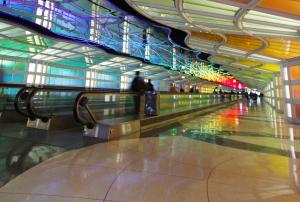Steve Mitnick is Editor-in-Chief of Public Utilities Fortnightly and author of the book “Lines Down: How We Pay, Use, Value Grid Electricity Amid the Storm.”
Remember The Jetsons? If you're old enough, the original series?

Almost nobody recalls that the original series was just twenty-four half hour shows during a single TV season, September 23, 1962 - March 3, 1963. Since The Jetsons had such an impact, and since it came at such a key time in our culture's history, most feel it lasted many more seasons.
Remember the simple theme song that opened the animation directed by William Hanna and Joseph Barbera?
Meet George Jetson,
His boy Elroy,
Daughter Judy,
Jane his wife.
The Jetsons are flying through Orbit City in the future, the twenty-first century. Elroy and Judy are jettisoned to school, Jane to the futuristic mall.
Then George continues to his job at Spacely Space Sprockets. The family flying machine folds into a suitcase. Then George rides a moving walkway to boss Cosmo Spacely (voice by Mel Blanc).
The enormous appeal of the series was in large part that it predicted the future. Or more precisely, The Jetsons predicted the future of consumer technologies.
It's incredible. Here it is, the year 2017. And we're able to say that these predictions of the original series, made fifty-five years ago, were remarkably accurate.
Though these technologies didn't exist during the presidency of John Kennedy, The Jetsons rode moving walkways as we do in airports. Their dog Astro exercised on a treadmill as we do in health clubs and at home.
The series featured flat screen and large projection televisions, desktop and laptop computers, smart phones and watches. None of these existed in the early sixties when we changed the channel of our vacuum tube sets to ABC after dinner, at 7:30.
There's more. George reads his news on the Internet, and teleconferences with video. In a time when the morning paper and the evening news broadcast were the sources for the news. And when desk phones with dials were how we stayed in touch. Before area codes, and before country codes.
The Jetsons also predicted video cameras, and light sensors. How could Hanna and Barbera have dreamed up all these technologies that are so common today?
In their home at Skypad Apartments, The Jetsons have electric toothbrushes and a microwave oven. They also order goods at home. Amazon isn't yet, in 2017, delivering products with the speed of pneumatic tubes.
There's Rosey the Robot, back there in the fall of 1962. We're now using robots more and more.
Buildings in the early sixties generally had small windows. Not in The Jetsons. The buildings heavily incorporated glass, as does our present architecture.
The doctor's office in Orbit City has magnetic resonance imaging. Though MRI was invented fifteen years later, in 1977.
What if we revived The Jetsons? What predictions would it make for consumer technologies in, say, the year 2072, fifty-five years from now?
Hanna and Barbera succeeded so extraordinarily because they imagined how technology companies might focus, based on the fundamental wants and needs of consumers. If we did that, we might think up fabulous devices for our comfort, safety and entertainment. We might extend the rudimentary steps to date in artificial intelligence, virtual and mixed reality, mind share, wearables, drones, 3D printing, etc.
And all these fabulous devices in 2072 will be electrical. As in 2017. As in 1962.
Lead image © Can Stock Photo / georgeburba



